The Northern Lights are a natural spectacle that many people know from numerous photos. But who doesn’t dream of experiencing them live and up close ? That’s why trips to see the Northern Lights are becoming increasingly popular, but there are a few things to plan and decide beforehand: Where do I want to observe the auroras from? When is the best chance of seeing them and what is the best way to get to my destination? Scandinavia in particular offers various opportunities to observe the spectacle and explore unique landscapes at the same time. You can find all the information here.
What are auroras and how do they occur?
Auroras appear as bright and colourful veils in the night sky. They occur in the polar region around the North and South Poles. Observations of these were recorded 2,000 years ago. However, their origin could not be explained at that time and so the belief developed that they were divine prophecies or messages from spirits to humans.
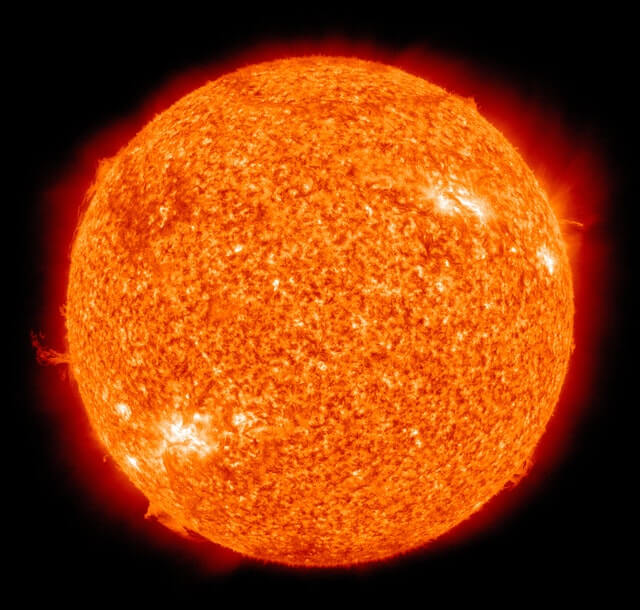
As beautiful as auroras are, so complex are they. Put simply, it is a combination of various physical factors: Starting from the sun, electromagnetic particles, i.e. protons and electrons, are hurled into space and then hit the earth at some point. This process is called solar wind. The Earth’s magnetic field, which emerges at the North Pole and re-enters at the South Pole, is actually a protective shield against these particles. However, some particles are deflected by the magnetic field and reach the two poles, where they transfer their energy to the gas molecules in the outer atmosphere. This causes them to glow and creates the aurora borealis. Depending on the strength of the solar wind, so strong are the lights.
A distinction is made between the Northern Lights (Aurora Borealis), which occur in the northern hemisphere of the earth, and the Southern Lights (Aurora Australis), which appear in the southern hemisphere. The colours of the aurora depend on the height at which the electrons emit their energy.
Green light: Green auroras occur most frequently because they occur relatively close to the earth, at an altitude of around 80 to 150 kilometres.
Red or blue light: Red and blue lights occur at an altitude of 150 to 600 kilometres. Violet and yellow are mixed colours that can occur.
Where and when can auroras be seen?
Northern Lights occur near the Arctic Circle and therefore also in the Scandinavian countries. Other regions are located in Scotland, Canada, Greenland, Alaska and northern Siberia, which together are known as the auroral oval. Overall, it is important to consider a few factors in order to create the optimal conditions for experiencing the Northern Lights on holiday.
The most suitable period is in the winter months from September to March. The advantage here is that the sun is only in the sky for a relatively short time and it gets dark again early. The darker the night, the easier it is to recognise the Northern Lights. You should plan enough time for your visit, as it is not possible to predict the light phenomena in the long term. Depending on the location and region, however, there are approximate indications of how many nights are polar nights, e.g. every second night in Sodankylä, Finland. If you want a more precise overview, you can install the free “Aurora Forecast” app. It creates forecasts for all aurora regions based on data from the US weather authority and the University of Alaska.
You should make sure that the sky is ideally cloudless and that the moon is not too bright. In addition, you will have the best view in flat areas or on a mountain further away from cities, as these are artificially illuminated at night.
Optimal conditions
- Position in the auroral oval
- The right time period
– Northern Lights: September to March
– Southern Lights: March to September - Position far outside the cities
- Position in wide and flat areas
- No artificial light in the vicinity
- Cloudless night
- Little moonlight
Northern lights in Scandinavia: travel destinations
Northern lights in Norway
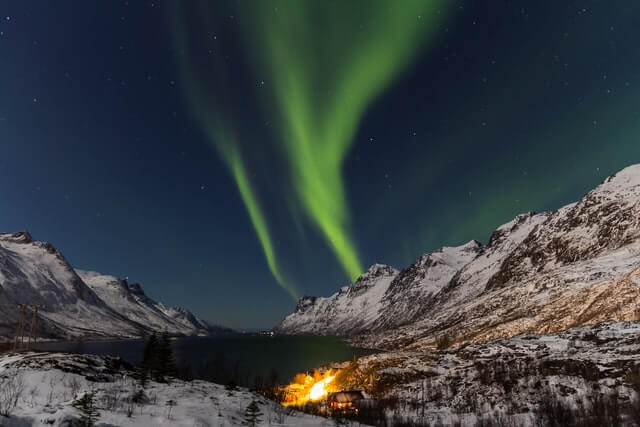
If you want to see the Northern Lights in Norway, you should travel as far north of the Arctic Circle as possible. Tromsø is a somewhat larger city and the furthest north in Norway. Here you will have the opportunity to experience the aurora borealis – usually green – in the sky for several hours a day. There is a permanent exhibition on auroras at the local university museum, where you can find out more about their formation.
Further, you can visit North Cape, the northernmost point of the European mainland, or Svalbard, a Norwegian archipelago between the Norwegian mainland and the North Pole. It is one of the northernmost inhabited areas and offers glaciers and rocks. Auroras occur frequently in both places. If you want to see more, you can also book a cruise along the coast of Norway.
Northern lights in Sweden
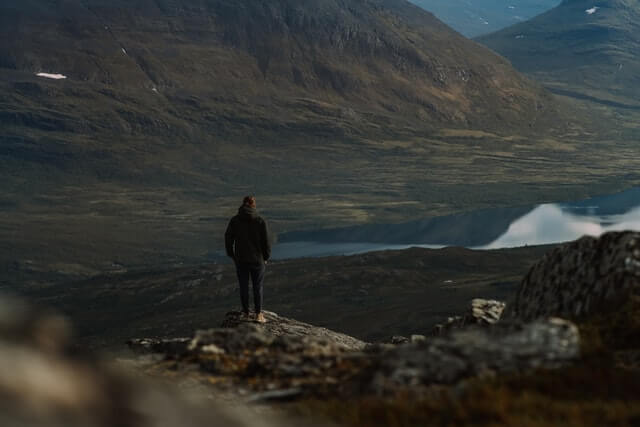
In Sweden, the northern lights are best observed in the northernmost region of Swedish Lapland. A tip for travellers is the area around the town of Abisko with the national park of the same name. Here you will find the “Blue Hole of Abisko”: the sky appears like a hole here as it always remains cloud-free, regardless of the weather. Directly below you will find the perfect spot to view the Northern Lights. There is a lake here, as well as the 900 metre high Nuolja mountain with the “Aurora Sky Station”, where you can also spend the night.
Other places in Sweden are Kiruna, the northernmost city in Sweden, and Luleå, which is also very far north at the mouth of the Gulf of Bothnia. In November, December and January, the likelihood of seeing the Northern Lights in Sweden is somewhat lower. It is therefore best to travel in the transitional phases of autumn and winter or winter and spring.
Northern lights in Finland
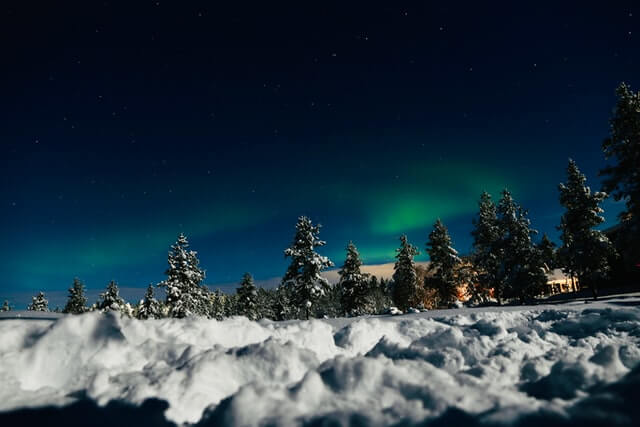
In Finland, the northernmost region of Finnish Lapland is the best place to see the Northern Lights. Here, the 514 metre-high Luosto mountain, which is located in the municipality of Sodankylä, is particularly recommended. It is home to the Northern Lights Research Centre, which produces regional forecasts for auroras.
Further, is is worth discovering the third largest lake in Finland, Inarijärvi. The small village of Nellim with around 200 inhabitants is also located on the lake and is a meeting place, as well as a pilgrimage site for travellers.
Northern lights in Iceland
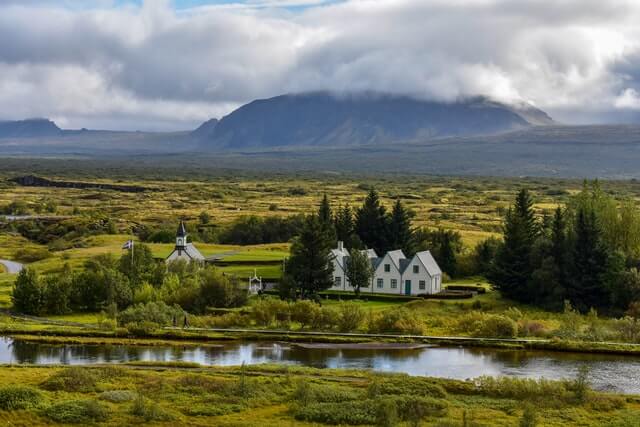
Iceland is the cheapest country in Scandinavia to visit, plus, the chance of seeing the Northern Lights is relatively high here. Outside of the capital Reykjavik, there are many remote areas from which you have a good view at night. A popular place for travellers is the Thingvellir National Park, which is a UNESCO World Heritage Site and lies in a rift zone between the continental plates. Despite the relatively short journey time from Reykjavik, an impressive natural landscape of geysers, volcanoes and waterfalls awaits you here.
Other recommended locations from which it is possible to observe the northern lights are the Gróttuviti lighthouse on the island of Grótta and the Öskjuhlíð hill, which is close to the capital as well
Northern Lights Travelling
Once the destination for observing the Northern Lights has been decided, the question arises as to how to get there and where to sleep, as well as the rest of the programme on site. There are numerous options to choose from or combine with each other.
Travelling on your own
If you want to travel on your own, you have the choice of booking a flight or travelling by car to reach your destination. Not only Reykjavik, but also the smaller towns such as Tromsø in Norway and Kiruna or Luleå in Sweden have their own airports. If you want to fly to Abisko in Sweden, you can also use the airport in Kiruna or the one in Harstad/Narvik.
Taking the car will take some time, which is why you should plan several days for the journey. Parts of which can be made by ferry or over bridges.
Round trips & cruises
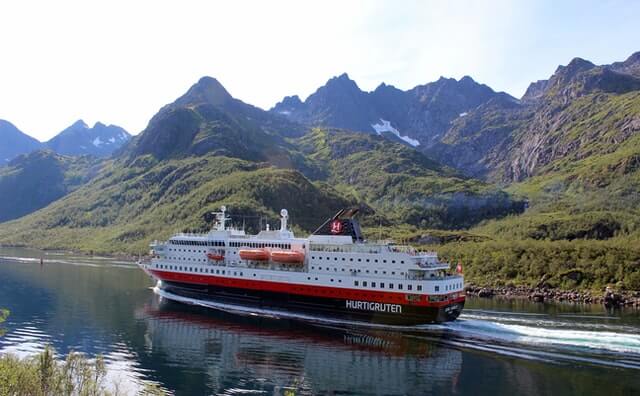
If you want to discover more of the Scandinavian destination and are more interested in round trips, you can book a cruise with the provider Hurtigruten, for example. They offer a Northern Lights tour from Bergen to the North Cape along the coast of Norway in the right period.
Various providers offer guided aurora tours for groups in minibuses, including flights and transfers to accommodation.
Accommodation & Tours
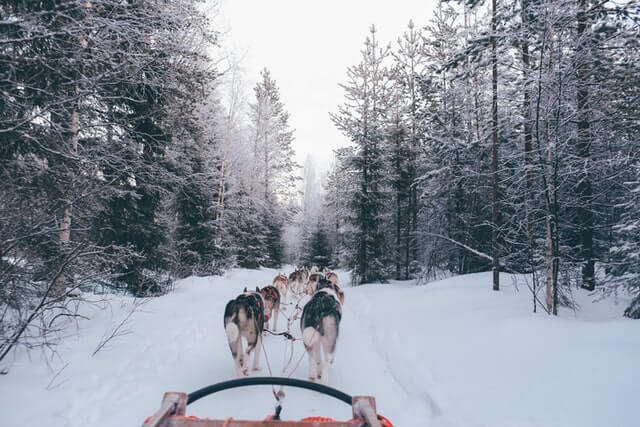
Certain accommodation and tours are ideal for a mix of adventure and relaxation. In Luosto in Finland, you can find the Nordic-style Aurora Chalet and Hotel with glass roofs and a view towards the north. The perfect place to watch the Northern Lights from your bed after they have been announced by the hotel’s own Northern Lights system via an alarm.
At the Kakslauttanen Arctic Resort in Saariselkä, Finland, you can stay overnight in glass igloos or book a cosy chalet with an adjacent igloo – the perfect accommodation to experience the Northern Lights at any time of day. You can also go on an aurora expedition or a reindeer safari to be taken into the unlit wilderness on a sledge.
